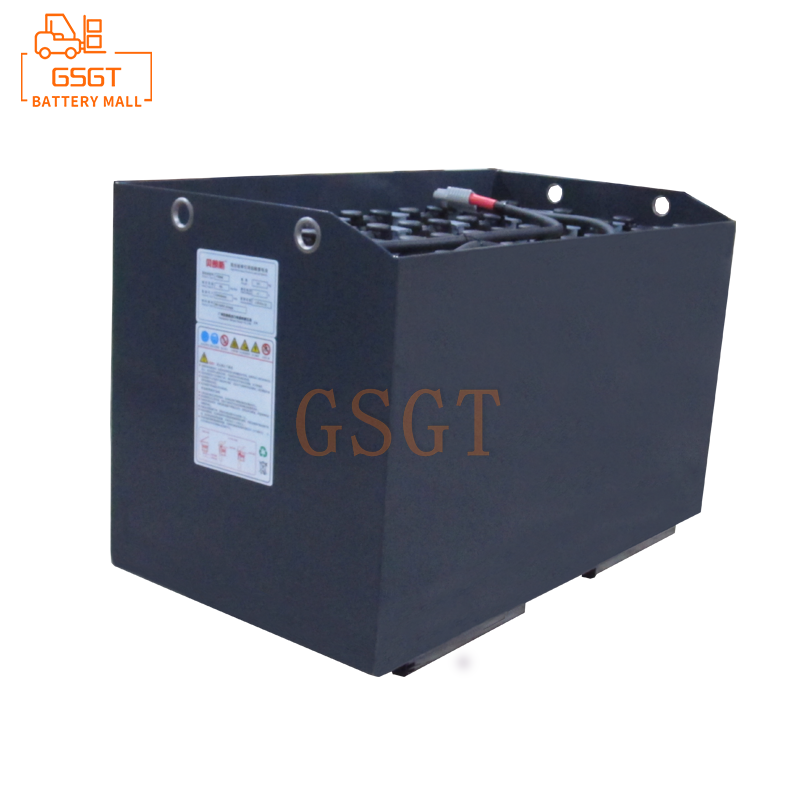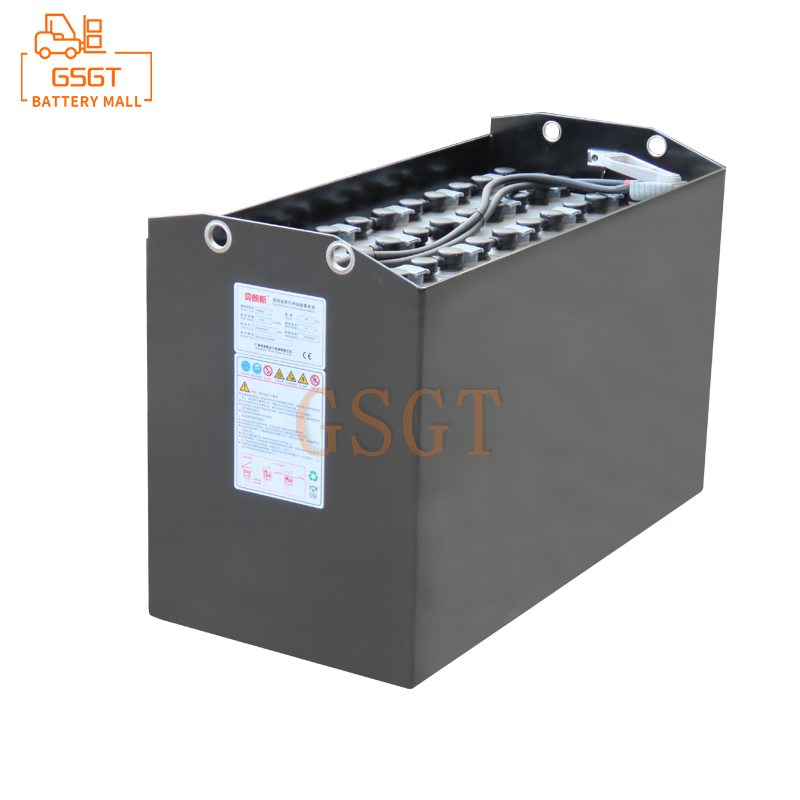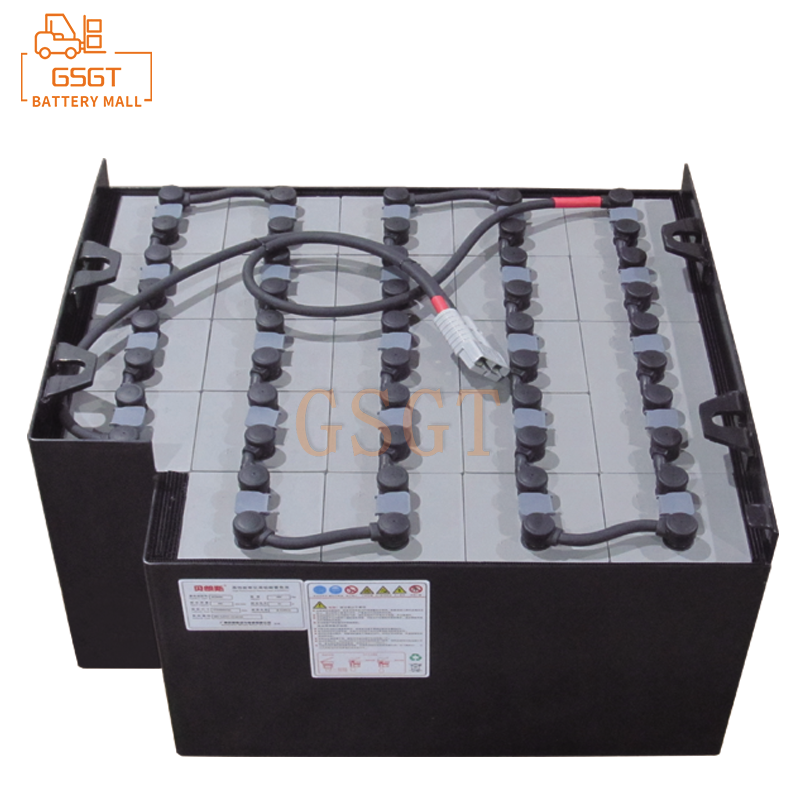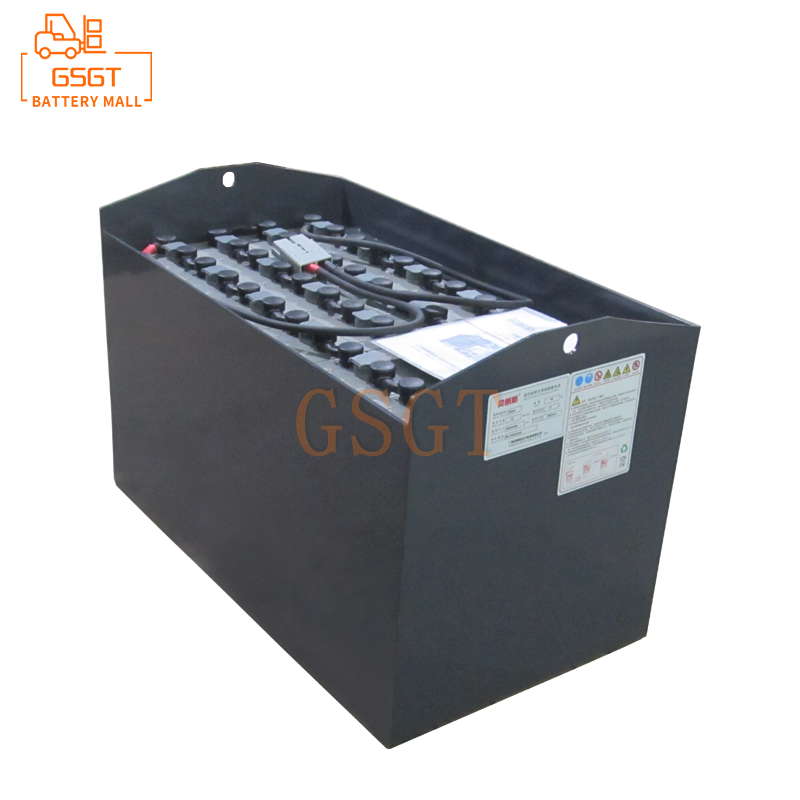Time:2025-03-04 14:29:31
Browse:345
In logistics warehousing, industrial production and other fields, Toyota forklifts with reliable performance and excellent stability, become the right hand of material handling. As the power core of forklift, the correct use and maintenance of lead-acid battery is directly related to the working efficiency, operating cost and service life of forklift. The following is a detailed guide to the use of lead-acid batteries for Toyota forklifts.
1. Basic cognition of battery
Lead-acid batteries commonly used by Toyota forklifts are mainly composed of positive and negative plates, electrolyte, separator and battery shell. Under the action of electrolyte, the active substances on the positive and negative plates realize the mutual conversion of electric energy and chemical energy through chemical reaction. In the discharge process, lead dioxide in the positive electrode and lead in the negative electrode react with sulfuric acid in the electrolyte to generate lead sulfate and water, and release electric energy to drive the forklift; When charging, the process is reversed, and the lead sulfate is decomposed and reduced to lead dioxide, lead and sulfuric acid, so that the battery is restored to power. Understanding this basic principle helps users better understand the subsequent use and maintenance points.
2.The main points of the charging process
●Accurately control the charging time: when the lead-acid battery power of Toyota forklift truck drops to 20%-30%, it should be charged in time. Excessive discharge will make the lead sulfate crystal particles on the plate grow larger, forming an irreversible vulcanization phenomenon, increasing the internal resistance of the battery, reducing the battery capacity, and seriously affecting the battery life. The forklift is usually equipped with a power display device, and the operator should develop the habit of observing the power at any time in daily operations. Once the power is close to the above threshold, it is necessary to stop the operation and drive the forklift to the designated charging area.
●Adaptation of original charging equipment: Toyota's original charger has been strictly designed and tested, and is highly matched with the electrical parameters of the forklift lead-acid battery. In the charging process, the charging voltage and current can be accurately controlled, and a variety of modes such as constant current charging, constant voltage charging and trickle charging are used to ensure that the battery can be quickly charged without being damaged by overcharging. If you use a non-original charger, the voltage and current may not match, resulting in undercharge or overcharge, damaging the battery performance. If you need to use a third-party charger due to special circumstances, carefully check whether the charger parameters are consistent with battery specifications.
●Strictly control the charging time: under normal circumstances, the Toyota forklift lead-acid battery needs 8-10 hours to be fully charged. However, the actual charging time will be affected by the remaining battery power, charger power and other factors. During the charging process, do not overcharge. Overcharging will produce a large amount of gas inside the battery, accelerate the electrolyte water loss, resulting in premature aging and deformation of the plate, and even lead to safety hazards such as battery bulge and fire. In order to avoid overcharging, you can set the timing function on the charger, or choose a smart charger with full stop function. At the same time, pay close attention to the battery temperature when charging. If the temperature exceeds 45 ° C, stop charging immediately, check the cause, and continue charging after the temperature returns to normal.
3. Daily maintenance details
●Keep batteries clean: Regular cleaning of lead-acid batteries in Toyota forklifts is essential. The accumulation of dust, electrolyte stains, and debris on the battery surface may cause short circuit on the battery surface and reduce the battery performance. Operators can use a clean wet cloth to wipe the battery shell, especially the positive and negative terminals, to ensure that there is no foreign matter, to prevent resistance due to poor contact, affecting current transmission. During the cleaning process, be sure to disconnect the power supply first to avoid electric shock accidents.
●Check the electrolyte level: Check the electrolyte level at least once a week. Under normal circumstances, the electrolyte level should be between the upper and lower scales marked on the battery housing. If the liquid level is too low, the plate cannot be fully immersed in the electrolyte, which will accelerate the plate vulcanization and reduce the battery capacity; If the liquid level is too high, the electrolyte may overflow during charging, corroding the battery cover and peripheral devices. When the liquid level is found to be too low, distilled water or a special lead-acid battery supplement solution should be added. When adding, it should be done slowly to avoid excessive addition. After adding, gently shake the battery to make the electrolyte mix evenly.
●Prevent battery vibration and impact: the internal plate of the lead-acid battery is relatively fragile, and the active substance on the plate may fall off when it is subjected to severe vibration or impact, resulting in internal short circuit of the battery and affecting the battery performance. When driving a Toyota forklift truck, try to avoid driving on bumpy and rugged roads, if it can not be avoided, you should reduce the speed and pass slowly. At the same time, periodically check whether the battery fixing device is firm to ensure that the battery is always in a stable state during the operation of the forklift.
4.Forklift operation specifications
●Smooth driving: When operating a Toyota forklift truck, rapid acceleration and sudden braking should be avoided. Rapid acceleration will make the battery output large current instantaneously, increase the chemical reaction rate inside the battery, generate excessive heat, accelerate battery aging; Sudden braking will cause the kinetic energy of the forklift to be instantly converted into electrical energy and fed back to the battery, which may cause the battery to overcharge. Therefore, the operator should develop a good habit of stable start and uniform speed, reasonable planning of the driving route, advance prediction of road conditions, reduce unnecessary start and stop operations, so that the battery output current remains stable, improve the efficiency of power utilization.
●Overload operation is strictly prohibited: Toyota forklifts have clear load rating standards, and overload operation will not only cause serious damage to the mechanical parts of the forklift, but also cause excessive battery discharge. When the forklift is overloaded, the motor needs to output more power to drive the forklift, which requires the battery to provide more current, and in this state for a long time, the battery plate will accelerate wear and shorten the battery life. Enterprises should strengthen the training of forklift operators, strictly require the operation in accordance with the rated load, and ensure that the battery works under normal conditions.
Proper use and maintenance of Toyota forklift lead-acid batteries can significantly improve the working efficiency of forklifts, reduce operating costs, and extend the overall service life of the batteries and forklifts. From the accurate grasp of charging timing, to the meticulous daily maintenance, and then to the strict specification of forklift operation, every link can not be ignored. It is hoped that this use guide can provide practical and effective help to the majority of users, so that Toyota forklift lead-acid batteries always maintain good working condition, and escort the production and operation of enterprises.

$3075

$2450

$3675

$3075

MESSAGE
Professional And Efficient
Security
Affordable Price
Professional Services